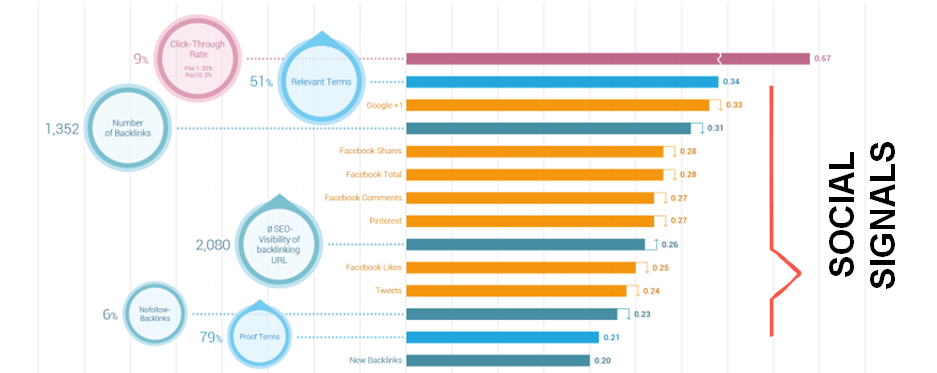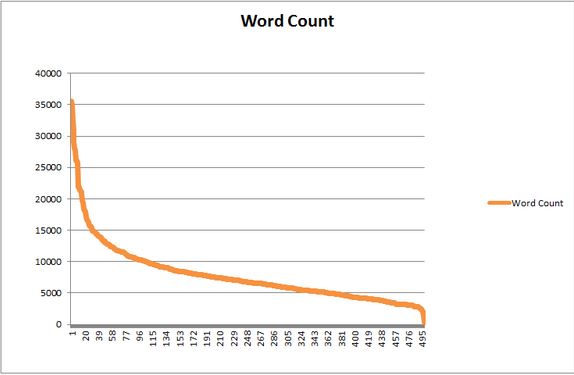If you want to avoid search penalties, link building is out.
Google is making sure of that one Penguin update at a time. Why? Because buying, trading and soliciting links rewards the best schemers, not the best answers, which is bad for users and for Google’s business model.
If building is out, we’re reminded that earning is perpetually “in” – and content is your best link-earning asset.
A lot of marketers are already acting on this. The majority of respondents in Moz’s Skyrocket SEO Link Building Survey use content creation to get links, and claim it’s more effective than any other tactic.
Content is more effective for links than:
- Infographic promotion
- Business directories
- Paid links and blog networks
So does this mean “if you write it, links will come?” I’m glad you asked. Here are some proactive steps you can take for link-able content.
1. Create something worth linking
It may seem like this goes without saying, but you can’t expect third-party sources to link to content that’s just OK. Write, design, produce something that’s original and creative. When people know they can’t get the same information anywhere else, they’re more likely to link to you.
Here are some additional tips from Brafton’s team about writing content that will earn links naturally:
- Create educational pieces that will be timeless resources
- Publish information that people will want to reference and cite

2. Share your content on social media
OK, this is a little misleading because distributing your content through your social accounts might not get you links right off the bat. Even if people distribute your content, the resulting links will probably be no-follow links or redirects. However, this is still valuable because it gets you in front of the right people, who might then link to your content in a separate post.
” Certain types of content will thrive on one network and only perform adequately on another, but the entire social media effort has to be coordinated to achieve marketing goals – especially when it comes to search rank performance.”
Even if building a strong social presence doesn’t start a flood of links right away, it does benefit your search presence. Earlier this year, Searchmetrics released its 2014 SEO Ranking Factors and Rank Correlations study, which concluded that social engagement signals are highly correlated with top-ranking content.
What does this mean in layman’s terms? If you distribute your content on social networks and people click it, share it and reply to it – Google thinks it’s relevant and pushes it to the top of results pages. (Check out our full coverage in this article.)
3. Share your content in forums where people are asking relevant questions
This approach may sound too simple to work, but sharing links to your content in discussion forums is a good idea when done right. The key to effective forum posting is context and value.
As Social Media Strategist Sumit suggests, “Slowly start sharing your content when – and only when – it makes sense … Don’t spam the conversations with promotional messages or links. You will get kicked out.”
You can drop a link in if it adds to the short answer you leave as a comment in a forum (such as QuickSprout, YouMoz, Quora) or a discussion forum (Google+ Communities, LinkedIn Groups). Be prepared for some of links to be stripped depending on the forum moderator, and accept that the notoriety or street cred from your comments could help build additional links over time.
4. Link to others’ content
You may be thinking: “Lauren, this isn’t going to help me get links. This is just giving other people links.” Well, the SEO world is a lot about reciprocity. If you link to content from writers and brands you respect – and you let them know that you’re going to do this – you will put yourself on their radars.
Pro tip: Every piece of link-earning advice you’ll ever read will confirm this is a long-term strategy.
It’s actually about building relationships by learning about that person’s expertise, having thoughtful interactions and promoting her content. It’s not an overnight, one-and-done, I-linked-to-you-once-now-give-me-links-back kind of deal. That’s what differentiates it from a spammy link exchange.
If you build strong relationships with people in your network, and you’re actually creating great content, those influencers might just return the favor and link back to your work when it’s relevant.
5. Ask people in your network to share your content
The bonus of building your professional network is that once you have real relationships with people (read: They know who you are, and you’ve had friendly exchanges online), you can ask them to share your new resource with their audiences. This gets your content in front of more eyes and can increase the chances of getting links from other publishers.
If you build strong relationships with people in your network, and you’re actually creating great content, those influencers might just return the favor and link back to your work when it’s relevant.
(We usually only do this with people who we’ve had conversations with in person, but a lot of email exchanges and social media interactions can count.)
Some good rules of thumb to follow are:
- Only send requests to people if you have their personal emails
- Start with contacts who have also sent you things to share in the past
- Reach out to people who have shared your content prior
Remember: You don’t want to annoy influencers or burn bridges with contacts by asking them to do you a favor out of the blue.
6. Create diverse resources
People like to gather information in a number of ways, and when you package your insights in multiple formats you improve the likelihood that viewers will find it valuable and in turn, link to your content. Think about creating graphics, videos and downloadable resources.
- Infographics are largely seen as linkbait. There’s sometimes a negative connotation around this term and using infographics to earn links point blank. That speculation is misguided as long as graphics are created to provide value and offer information. Here’s our ultimate guide to infographic marketing success. Due to the sheer amount of data infographics usually contain, they’re great pieces to showcase compelling stats that people want to reference.
- In-depth resources like extended blog posts, eBooks and white papers that are action-packed with original research, in-demand data AND custom visuals provide a winning formula for links. When writers sit down to create content, they’re often drawing on in-depth assets and will provide a link to credit the source if they’re following editorial best practices.
A study by University of Pennsylvania professors and The New York Times found longer, more substantial posts get the most links.
At this point in SEO history, there’s no surefire way to build links. Bing’s Duane Forrester has gone as far as to suggest that if you know where your links are coming from, you’re already in spam territory. Google’s Matt Cutts said it’s not that extreme, but that marketers SHOULD be less focused on getting links and more focused on creating great content. The links will follow.
What are your thoughts? What are the best ways to get links these days?





